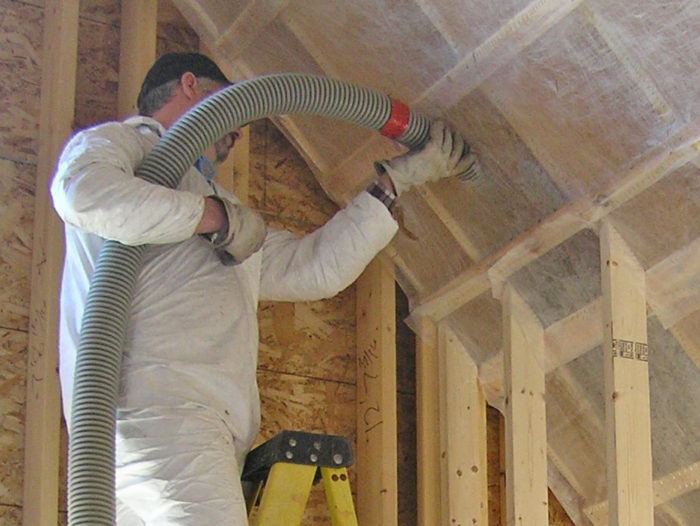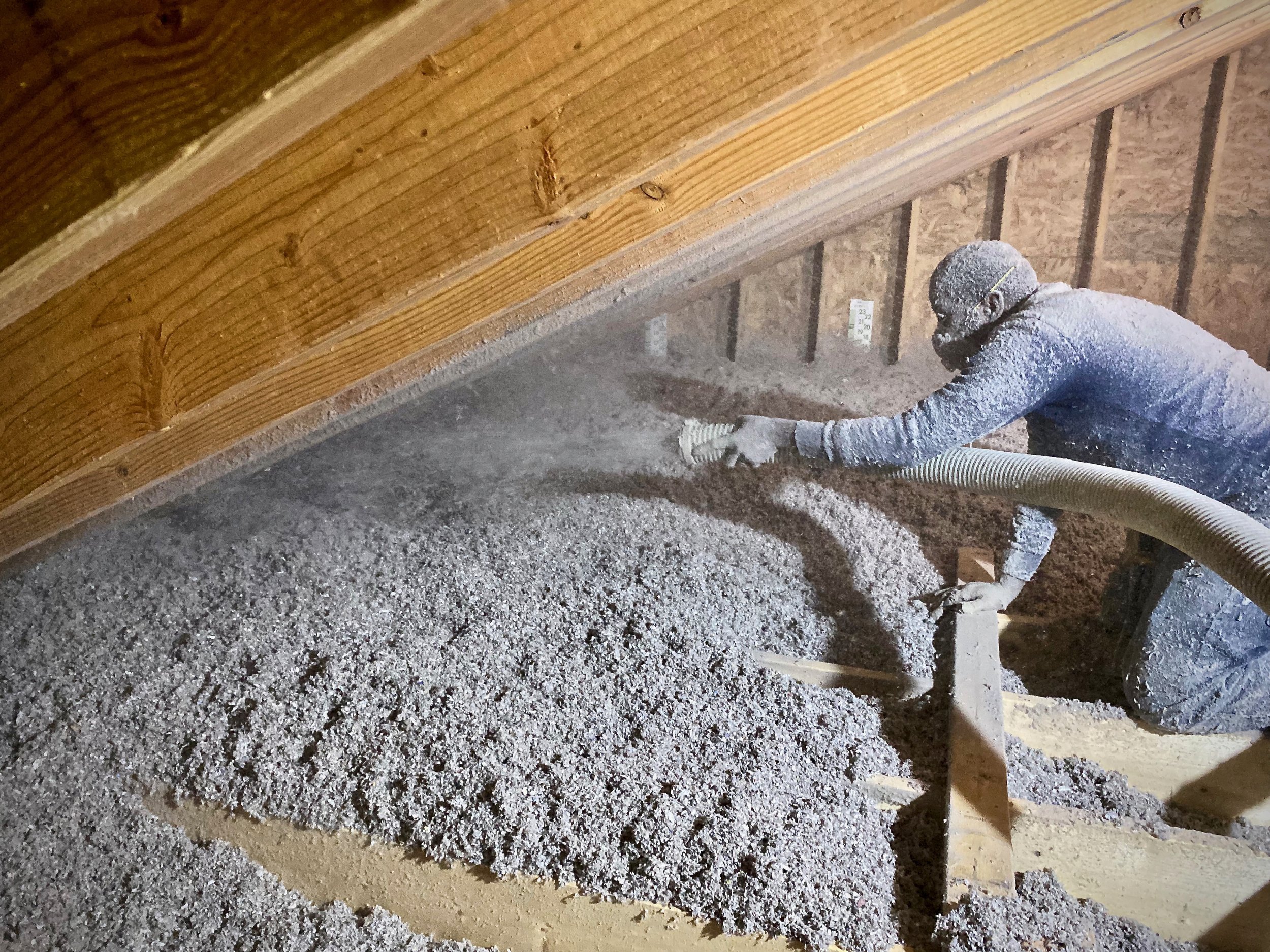Older homes offer a character that modern buildings often lack—but that charm usually comes with poor insulation. Drafty rooms, fluctuating temperatures, and high energy bills are common symptoms in vintage homes built before insulation standards were enforced. Retrofitting these homes with the right insulation is key to improving comfort and energy efficiency without compromising the structure’s original features.
Blown-in insulation has emerged as one of the most effective methods for insulating older homes. This article explains why it’s particularly well-suited for retrofits, how it works with common building materials in aged homes, and what benefits homeowners can expect—whether they’re renovating a 1920s craftsman or a mid-century bungalow.
How Blown-In Insulation Works in Older Structures
Older homes present unique challenges for insulation—many have no insulation in the walls at all, or degraded materials that no longer perform well. Blown-in insulation addresses these issues with minimal disruption to the original construction.
Fills Irregular Spaces Without Major Demolition
Blown-in insulation is installed by drilling small access holes and using a hose to fill cavities with loose or dense-pack material. This makes it ideal for hard-to-reach areas such as wall cavities, attic slopes, and floor joists in homes with outdated framing.
- Dense-pack cellulose is particularly effective for this application, offering high thermal resistance and sound dampening.
- The material conforms to the space, sealing gaps around pipes, electrical wiring, and uneven framing.
Compatible with Plaster and Lath Walls
Many homes built before the 1950s feature plaster and lath interior walls. Removing them to install traditional batts can be time-consuming and costly. Blown-in insulation offers a non-invasive alternative.
- Installers drill through the plaster or exterior sheathing to insert the insulation.
- Once installed, the holes are patched and finished without removing large sections of wall.

Key Benefits for Older Homes
Choosing blown-in insulation can significantly improve a home’s performance without requiring a full renovation.
Improves Energy Efficiency and Comfort
Older homes are notoriously inefficient, especially those without any wall insulation. Blown-in cellulose or fiberglass insulation helps stabilize indoor temperatures year-round.
- Reduces heat loss in winter and keeps conditioned air indoors in summer.
- Helps HVAC systems operate more efficiently, lowering energy use over time.
Enhances Sound Control Between Rooms
Sound insulation was rarely a concern in early 20th-century construction. Dense-pack blown-in insulation helps absorb airborne noise.
- Particularly useful in multi-story homes or those with shared interior walls.
- Adds a layer of privacy between living spaces without altering room dimensions.
Environmentally Friendly Retrofit Option
Blown-in cellulose is made from recycled paper treated for fire and pest resistance. For homeowners seeking a sustainable upgrade:
- It contains up to 85% post-consumer recycled content.
- Installation results in lower waste compared to fiberglass batts.
Installation Process in Older Homes
Upgrading insulation in an older home involves planning around existing finishes, structural quirks, and access limitations.
Site Assessment and Planning
Before installation, a home energy assessment or blower door test can identify air leaks and poorly insulated areas.
- Evaluates wall cavities, attics, and rim joists for accessibility.
- Helps determine the appropriate insulation density and type.
Insertion Points and Blowing Method
Installers typically drill access holes between wall studs—either from inside the home or from the exterior under siding.
- A hose delivers the insulation into cavities at a controlled pressure.
- Holes are sealed and patched to restore the wall’s appearance.
| Feature | Blown-In Insulation | Batts/Rolls | Spray Foam |
|---|---|---|---|
| Wall Access Needed | Small drilled holes | Full wall removal | Open cavity required |
| Best For Retrofits | ✅ | ❌ | ✅ (if open cavity) |
| Sound Dampening | High | Medium | High |
| Moisture Tolerance | Moderate (cellulose) | Low | High |
Common Challenges in Retrofitting Older Homes
Some homeowners hesitate to insulate due to potential complications. While blown-in insulation minimizes many issues, there are still factors to consider.
Settling Over Time
Cellulose insulation can settle, especially if not densely packed. This can reduce effectiveness over time.
- Dense-pack methods reduce the risk of settling.
- Regular energy audits help monitor insulation performance.
Moisture Concerns
Older homes with poor ventilation or roof leaks may trap moisture, which can degrade cellulose.
- Air sealing and vapor barriers are critical in high-humidity areas.
- Insulation should never be installed in wet cavities.
Structural Obstacles
Wiring, plumbing, and narrow framing spaces can make consistent insulation coverage difficult.
- Experienced installers use borescopes to verify full coverage.
- Multiple access points may be needed to reach isolated sections.
Common Questions
Can blown-in insulation be added without removing drywall?
Yes, small holes are drilled into the wall cavities to insert insulation, then patched. This avoids large-scale drywall removal, making the process minimally invasive.
Is blown-in insulation safe for homes with knob and tube wiring?
Not without evaluation. Knob and tube systems generate heat and may not meet modern codes. A licensed electrician should inspect and potentially upgrade the wiring before installation.
Does blown-in insulation work in attics as well as walls?
Yes, it’s commonly used in attic floors to achieve high R-values quickly. It covers joists and irregular surfaces effectively.
Can blown-in insulation be installed from the outside?
Yes, especially when homes have wood siding, shingles, or vinyl that can be temporarily removed. This keeps interior finishes untouched.
Conclusion
Blown-in insulation offers a practical and effective solution for improving comfort, energy efficiency, and indoor air quality in older homes. Without requiring major demolition or compromising the building’s character, it fills gaps and air leaks that traditional materials miss.
Its compatibility with existing walls, environmental benefits, and thermal performance make it well-suited to older structures. For homeowners restoring or maintaining vintage properties, blown-in insulation is one of the most efficient upgrades available.
FAQs
How long does blown-in insulation last in older homes? When installed correctly and kept dry, it can last 20–30 years or more. Regular home energy evaluations help monitor performance over time.
Does blown-in cellulose attract pests? No. It’s treated with borate compounds, which deter insects and rodents while adding fire resistance.
Can you insulate lath and plaster walls without damaging them? Yes. Installers use careful drilling techniques to minimize disturbance. Afterward, holes are sealed and repainted or re-plastered to match the original finish.
Is there a fire risk with cellulose insulation? No, not when properly treated. Modern cellulose is treated with fire retardants to meet safety standards and is safe when installed by professionals.
Is dense-pack blown-in insulation better than loose-fill? Dense-pack is preferred for walls because it resists settling and provides a tighter air seal. Loose-fill works well in open areas like attic floors.
Author: Rene Zamarripa is a spray foam installer and insulation expert who began his career in 2008 with Key Insulation in San Antonio. With over 17 years of hands-on experience, he now leads a growing insulation company. Rene specializes in identifying the right insulation systems for both residential and commercial projects, including spray foam, cellulose, and fiberglass. His technical expertise spans spray foam rig operation, temperature and pressure management, and consistent delivery of quality work.
Reviewer: Benjamin Lee, with 13 years in spray foam insulation, reviewed this article to ensure accuracy and practical relevance. His feedback focuses on helping insulation professionals build trust with clients and improve service delivery across residential and commercial projects.
